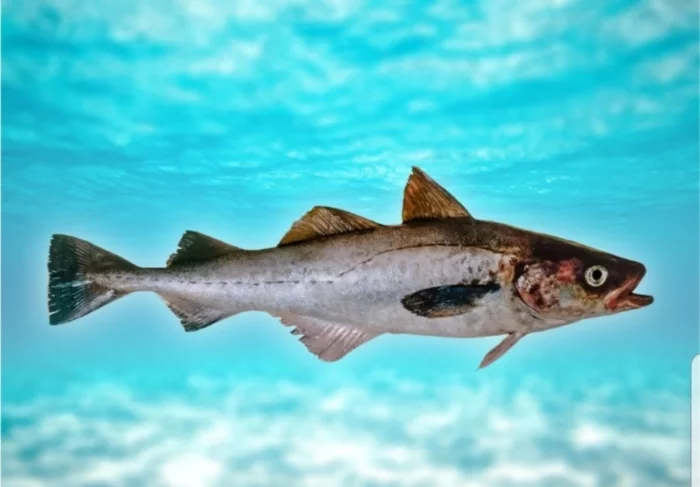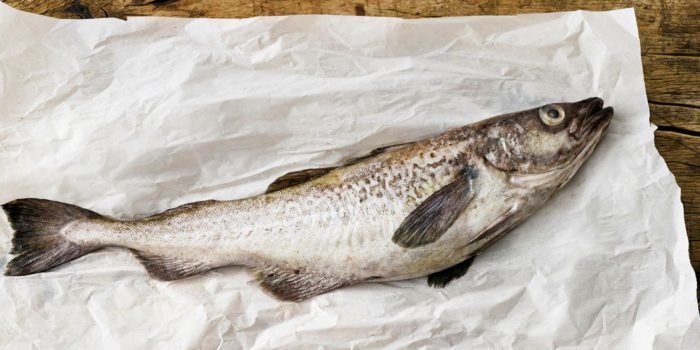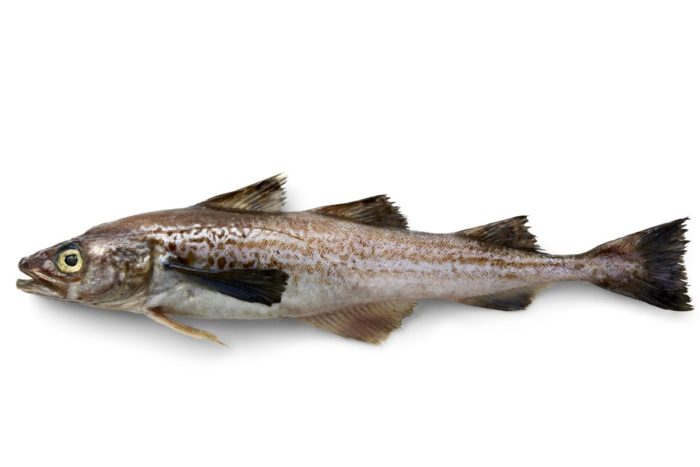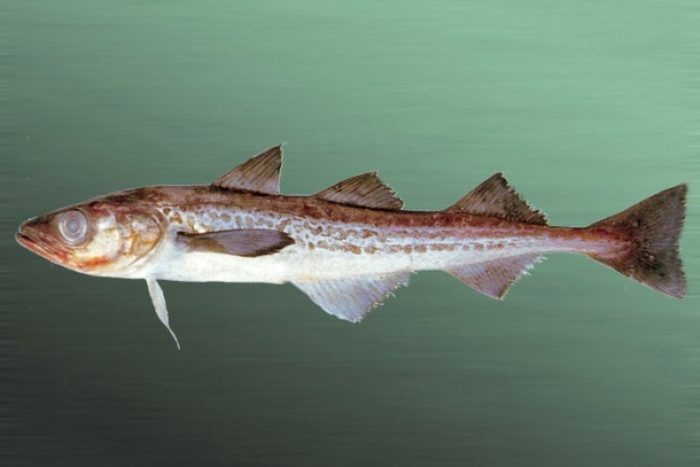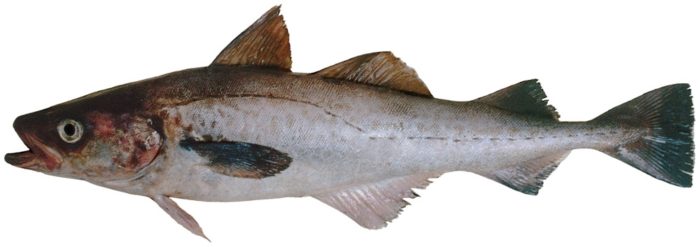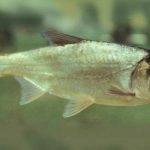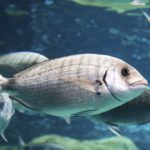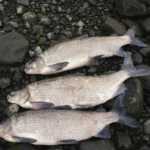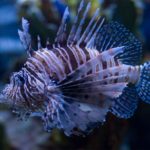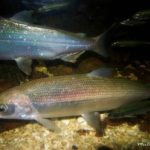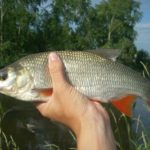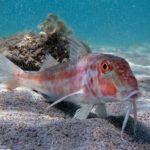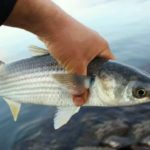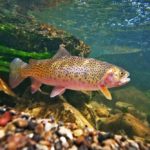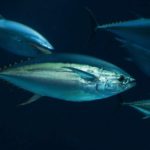Pollock is a popular and affordable sea fish. In Soviet times, it was mandatory to be served in canteens at enterprises twice a week. Fish sticks at American McDonald's are made from pollock. The first catches were made by Koreans three centuries ago. Until now, commercial production of this fish is the largest on the planet. A genus of inhabitants of the deep sea is united under the name “pollock”. Their habitat covers the Northern Hemisphere.
What kind of fish is this
Pollock belongs to the Ray-finned class and the Cod family. Until 2014 it was classified as Theragra, which in Latin corresponds to the name of the genus Pollock, which in turn comes from the Korean-Japanese word “mentai”.
The marine life is now scientifically referred to as Gadus, which means fish in Latin. The second word in the name chalcogrammus is a combination of the Greek words "chalcos" and "gramma", "bronze" or "brass" and "mark". In general, the name can be translated as “bronze fish”.
Adult sizes:
- length - 45 centimeters;
- weight - 1.5 kilograms;
- the maximum known size is 91 centimeters long and weighing 5 kilograms.
The deep-sea predator lives only in salt water. Its lifespan is 15 years. Fish reach sexual maturity in the fourth year of life. Spawning begins in early March and lasts until autumn in different habitats.
How does she look
Pollock has a graceful, streamlined silhouette. A characteristic feature in the structure of the body is a pronounced bend of the lateral line. Other external features:
- visual disproportion of the head in relation to the body;
- the jaw protrudes forward;
- big eyes;
- tactile antennae under the lower lip;
- the body, thickened in the bend of the lateral line, tapers towards the tail;
- the pelvic fin is in front of the pectoral fin;
- the first dorsal fin is located behind the head, the second - in the area where the back meets the tail, and the third - on the tail;
- two anal fins are triangular in shape;
- caudal fin with a slightly pronounced notch.
The fish is distinguished by small silvery scales on the abdomen, a dark back and spots on the upper half of the body. Evenly distributed spots give the silver-lilac color an olive tint.
Habitat
Pollock is a resident of middle waters at a depth of 200-300 meters, maximum 700 meters.During the spawning period, schools of fish rise higher and swim up to 50 meters from the coastline. Comfortable temperature for their life is from +2 to +9 degrees.
Pollock common in the northern seas near North America, the Russian Far East, and Scandinavia. Fish species are classified according to their habitats:
| Species name | Distribution area |
| Pacific | Beringovo, Japanese, Okhotsk Sea |
| Atlantic | The waters of Norway, Iceland, Ireland, USA, Faroe Islands. |
| Alaskan | Chukchi, Barents, Norwegian Sea |
| Kamchatsky | Waters near Kamchatka |
| Bering Sea | Western and eastern Bering Sea |
| Southern | Sea of Okhotsk |
| Northern |
The Alaskan and Pacific species are more common in Russian waters. The Atlantic species lives in North American waters from the Hudson Strait to Cape Hatteras.
The cold-loving fish is found in the Arctic Ocean near the Spitsbergen archipelago. The warmest area that flocks reach is the Bay of Biscay.
Lifestyle
Pollock lives in pelagic or mid-waters, the most populated part of the world's oceans. The fish form schools, move vertically, rising up to 100 meters from the surface of the water, and swim into the seas to spawn. Marine life is active during the day. They spend nights in the upper layers of water. During wintering, flocks are located on the continental slopes.
Cold-loving fish are able to spawn at a temperature of -1.8 degrees and under the ice edge. Egg throwing occurs at a depth of 50 to 1000 meters. The fry hatch in the water column. One female lays about 200 thousand eggs.
The total fertility per year reaches 2.5 million eggs.In young animals there are three times more males than females, but in old age the ratio changes in the opposite direction.
Pollock is hunted by large deep-sea predators - squids and angler fish. During spawning, it swims to the shores, where it becomes prey for trawlers and fishermen.
What does pollock eat?
The diet of young animals consists of plankton. As fish grow, so does the size of their prey. Pollock looks predatory, but chooses a victim smaller than itself. Its menu:
- small fish - smelt, capelin;
- other people's and own fry, eggs;
- invertebrates - amphipods, nematodes;
- crustaceans, krill.
Most of the predator's diet consists of crustaceans and plankton. It also eats small squids. During the spawning period, schools of fish grab any organic matter; they are characterized by cannibalism.
Pollock in the fishery
The representative of the cod family is not threatened with Red Book status, but in the 21st century its production has decreased. In the post-war years, fish were caught mainly in Japan and Korea.
From the 80s of the last century and for twenty years, 7 million tons of pollock were caught per year. Of these, 50 percent were mined in Russia and fed to animals on farms. The rest of the world catch came from European countries, Norway, and Great Britain. By the third millennium, the number of fish in nature began to decline.
Industrial fishing has been cut by half. In 2009, environmental organizations called on European countries to abandon mining, but there were no serious consequences for the population decline. Pollock is not in danger of extinction. Now the world catch is distributed between the United States and Russia.
There are enough pollock in the habitat, so artificial rearing is not necessary.But there is a limit on the size of the fish caught - individuals smaller than 20 centimeters are released into the ocean, since they have not yet reached the adult age of two years. Total annual production is 3 million tons, of which 1.3 million are caught in Russian waters.
Pollock is sold without a head, as it is believed that it accumulates parasites in its gills, like river fish. In fact, headless carcasses are a legacy of Soviet times, when the inedible parts and offal were processed into livestock feed.
About pollock meat
A dietary product, and, like all seafood, it is full of nutrients and vitamins. The energy value of 100 grams of fillet is 70-72 kilocalories. Heat treatment does not make it too heavy. In 100 grams of fried pollock, the number of calories will increase to only 115.
The meat is rich in protein - 15.9 grams per 100 grams of product. There are no carbohydrates in it, and fats amount to 0.7 grams, so dishes from this fish turn out juicy and aromatic. Useful microelements in pollock:
- saturated and unsaturated acids;
- B vitamins;
- vitamins A and C;
- calcium;
- phosphorus;
- magnesium;
- zinc;
- potassium;
- iron;
- iodine;
- fluorine.
A serving of pollock fillet contains one fifth of a person's daily requirement for vitamins. It tastes like crab meat and is used in making crab sticks. The advantage of fish is the absence of small bones.
Beneficial effects of pollock meat on the body:
- increasing immunity;
- prevention of reproductive problems;
- strengthening bone tissue and tooth enamel;
- reduction in blood cholesterol levels;
- skin cleansing;
- strengthening blood vessels.
Eating pollock is useful during sports training to replenish energy and after stress.Protein strengthens muscles, and potassium and magnesium strengthen nerves. In addition to meat, liver and fish roe have a beneficial effect on the body. Both products are sold in stores as canned food.
The liver is useful during pregnancy and thyroid dysfunction. It is recommended to eat caviar in case of heart failure, but due to its high calorie content (474 kilocalories), the permissible daily portion is 25 grams.
Pollock rarely causes allergies. Sea fish is good fried, boiled, smoked and salted. A dish prepared without salt helps to resolve swelling. Salted pollock, on the contrary, retains water in the body. Often fillets are cooked with sauces. Tender fish are also marinated in wine and seasonings, but never in vinegar.
Fishing information
It is best to catch pollock before spawning, when the fish are actively looking for food and gaining weight. At this time, flocks fill the upper and middle waters and swim to the shore. The pollock bites hard and sharply and breaks off the hook. Due to its excessive activity, it is difficult to catch, but there is no need to hook fish that have thoroughly swallowed the bait. A catch that does not break is noticeably heavy on the fishing rod.
Pollock on a hook behaves aggressively, tears the line, and pulls to depth. Tackle for catching it must be flexible, but durable.
Voracious and zealous fish will like baits bright in sea colors. Fishing methods:
- for jigs - artificial bait for spinning, a type of spinner. Special jigs for sea fishing are heavier than river jigs and can weigh up to a kilogram. For pollock, bait weighing 10-20 grams is enough. Metal jigs attract fish with their shine;
- jig spinning rod - with a weight and silicone bait. A carbon rod with a high rigidity modulus is suitable for fishing using the jig technique.The universal length for boat and shore fishing is 210-240 centimeters. To catch pollock, flat asymmetrical baits that play when falling are used;
- spinning "squid" - a Japanese fishing rod for catching squid, suitable for vertical fishing from a boat. It is stronger than conventional fishing rods and can withstand sudden downward jerks. This property of the “squid” is very useful for aggressive biting of pollock.
A favorable time for pollock fishing in Russia comes in the spring. In April, amateur fishing begins in Kamchatka. In the Ussuri Bay, flocks have been active since mid-March. In Korea, sea fish are caught from November and all winter until March. You can fish from the shore or from a boat, but in the spring shore fishing is preferable.
Pollock loves rocky, algae-covered places. An echo sounder will help you find the location of a large flock. The only obstacle to a good catch may be a storm. The strong movement of coastal waters frightens the fish, and schools leave such places until next year.
On an industrial scale, pollock is caught in nets. Fishing vessels do not move further than coastal waters and describe hexagons in the water area in order to capture an entire school with their trawl. The net lifts up to 90 tons of fish per day.

